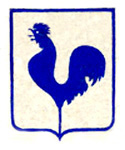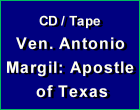Cuentos y leyendas
 |
 |
 |
 |
 |
 |
 |
San Brandán y los Monstruos Marinos
San Brandán, nacido en el año 484 d.C. en el condado de Kerry, es considerado uno de los Doce Apóstoles de Irlanda. Llegó a ser conocido como Brandán el Navegante por un largo viaje marítimo que emprendió junto con 14 de sus monjes por las aguas del Atlántico.
Durante el viaje ocurrieron muchos eventos fantásticos y milagrosos. Los siguientes incidentes tuvieron lugar durante esta travesía.
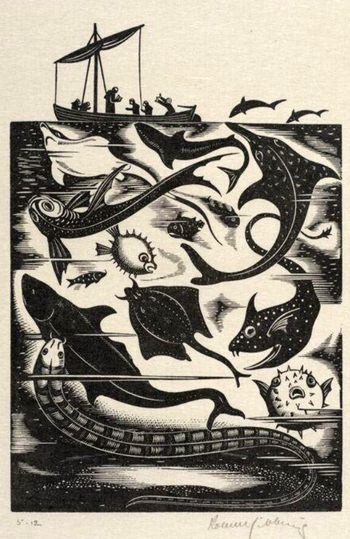
Los grandes peces del mar se regocijan con San Brandán en la fiesta de San Pablo
“Canta más bajo, Maestro, o naufragaremos. Porque el agua es tan clara que podemos ver hasta el fondo, y vemos innumerables peces grandes y feroces, como nunca antes han sido vistos por ojo humano, y si los enfadas con tu canto, pereceremos.”
Entonces el Abad los reprendió por necios y soltó una gran carcajada.
“¿Qué ha hecho desaparecer vuestra fe?”, dijo. “No temáis nada más que al Señor nuestro Dios, y amadlo con temor. Muchas pruebas os han desafiado, pero el Señor os ha librado de todas ellas. Aquí no hay peligro. ¿A qué teméis?”
Y volviéndose de nuevo, Brandán celebró la Misa con más solemnidad que antes.
Entonces los monstruos del abismo comenzaron a surgir por todos lados, y regocijándose por la alegría de la Fiesta, siguieron al barco. Sin embargo, cuando terminó el Oficio del día, inmediatamente dieron la vuelta y se marcharon.
Jasconius
When they approached an island on the eve of Easter Sunday, the boat began to ground before they could reach its landing place. St. Brendan ordered the brothers to disembark from the boat into the sea, which they did. They held the boat on both side with ropes until they came to the landing-place.
The island was stony and without grass. There were a few pieces of driftwood on it, but no sand on its shore.
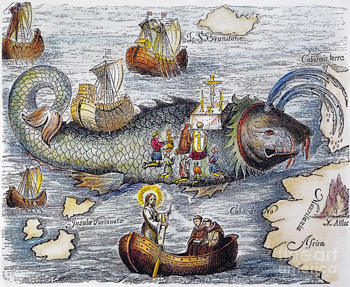
The priest Amphibalus baptizing & teaching the people
When morning came he ordered each of the priests to sing his Mass [for it was Easter], which they did. While St. Brendan was himself singing his Mass in the boat, the brothers began to carry the raw meat [that they had procured on the Island of Sheep] out of the boat to preserve it with salt. When they had done this, they put a pot over a fire that they built on the island.
When, however, they were plying the fire with wood and the pot began to boil, the island began to be in motion like a wave. The brother rushed to the boat, crying out for protection to the holy father. He drew each one of them into the boat by his hand.
Then, leaving all they had had on the island behind, they began to sail. Then the island moved out to sea. The lighted fire could be seen over two miles away. St. Brendan told the brother what the island really was, saying, “Brothers, are you surprised at what this island has done?
They answered, “We are very surprised and indeed terror stricken.”
He said to them, “My sons, do not be afraid. God revealed to me during the night in a vision the secret of this affair. Where we were was not an island, but a fish – the greatest of all that swim in the ocean. He is always trying to bring his tail to meet his head, but he cannot because the tail is not long enough. His name is Jasconius.”
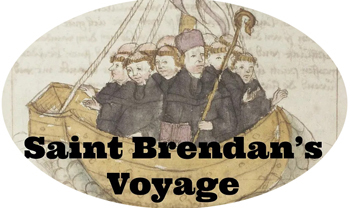
Adaptado de la Historia Eclesiástica de Beda,
(Londres: George Bell and Sons, 1907)
Publicado el 19 de julio de 2025
(Londres: George Bell and Sons, 1907)
Publicado el 19 de julio de 2025

